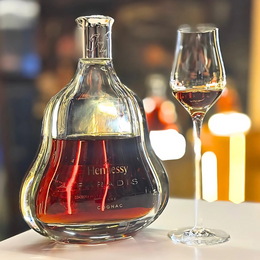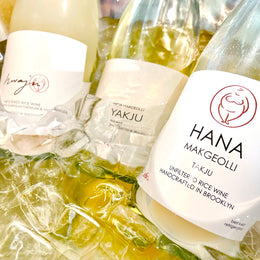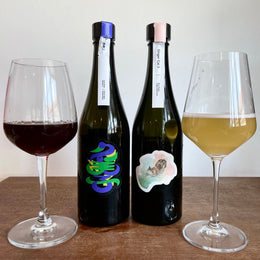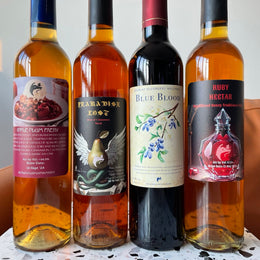
Is this that mead? The elusive, the unicorn, the legendary Pokemon of a mead that made its debut more than 2 years ago and has only made sporadic appearances throughout Singapore? The mead that I, personally, have hunted for two years after stalking Lion City Meadery’s Instagram?

A meme from the Lion City Meadery Instagram
No - that mead is a done deal, and it’s not coming back (the last few reserves of it might still be out in the wild, and you may need to know a guy who knows a guy who knows a guy to find them). Instead, we’ve got this Royal Imperial Chrysanthemum Mead instead - almost an evolution from its predecessor and, to be frank, is a welcome signal of more projects from Lion City Meadery to come.
Read our full deep-dive on Lion City Meadery here!

The Royal Imperial Chrysanthemum Mead is the result of popular demand to bring back their original Chrysanthemum mead back over the past few years. The duo behind Lion City Meadery, Sanjay and Justin, have made it clear that it’s not coming back (as that batch of mead was brewed in Australia before moving operations to Singapore).
Brewing in Singapore, at an undisclosed site.
While the original, 7% ABV beer-like mead is no more, this mead is nevertheless a worthy celebration for Lion City Meadery’s 5th year anniversary, as well as the first brew to have been made in Lion City Meadery’s new and undisclosed Singaporean brewery. Instead of the usual 330ml beer bottle, this mead is doubled in both volume and alcohol of its predecessor - sold at a whopping 700ml, at 14% ABV. Talk about an evolution!

The official announcement from the LCM Instagram.
In Bad Company
One day, I saw the post on Lion City Meadery’s Instagram - talking about mentions of a Chrysanthemum mead. A personal anecdote of mine - I missed the chance to get the original Chrysanthemum mead at 7% ABV. Bugger. Undeterred, I made a beeline to In Bad Company, where this version of Chrysanthemum Mead is dropped.

Collateral from In Bad Comapny's Instagram
A hip gastrobar tucked away in the bustling East Coast Road, the place is known to be an insider hideout for beer fans, aspiring artists and music junkies. It was the first location for the first soft launch of the 14% ABV stuff, with the addition of honey-themed dishes as well as a highball version of the new mead. They also have a slushie out of the Longan Red Date Mead, which is part of the Liang Teh series that the original Chrysanthemum Mead belonged to.

Taken from the mezzanine.
For the new Chrysanthemum Mead’s debut in In Bad Company, DJs would be performing for the night. The new mead was available on tap as well as bottle sales, and as a testament to Lion City Meadery’s popularity, all 12 bottles that were available for the event sold up even before the sun set. For me, I went over the moment In Bad Company opened their doors(not making the same mistake as last time!) grabbed a 250ml glass of the mead, which was paired with a honey cured Swordfish sashimi.

Not only did the sashimi have an intense, chew-some texture, the umami of the fish was really accentuated by the subtle but present sweetness in the honey cure. Coupled with a slight spicy kick from the gochujang marinate and the richness tempered by the acidity of the shallot vinaigrette, this plate of sashimi was super tasty and the perfect savoury accompaniment to my mead. Kudos to the chefs behind In Bad Company!

I had the fortune of meeting the two brains behind Lion City Meadery, Sanjay and Justin, and had a chat with them about their new mead. They informed me, a greenhorn on meads, that mead often came in to styles: 1) a beer-like style that was more effervescent, light on flavour and tend to hover between 5 to 10% ABV, and 2) a wine-like style, which was more traditional, thicker, and sweeter - resembling a dessert wine.
![]()
Wine style meads tend not to be as effervescent and higher in ABV.
The Royal Imperial mead got its aristocratic name from the way it was fashioned liked an Imperial Stout - heavy, thick, high ABV, and meant to be enjoyed like one. However, Justin and Sanjay are not particular with how you'll like to enjoy the mead - chased with ice, water, sparkling water, "as long as you enjoy it". There are a few firsts to be had with this version of the Chrysanthemum Mead, right from the liquid itself to even the packaging.
The mead, first and foremost, is the first of its kind from Lion City Meadery - the usual meads tend towards a sour-beer style, mostly due to the refreshing ability cold, sour and bubbly drinks tend to have in the Singaporean hot climate. This wine-style mead, however, is the first single in its genre for Lion City Meadery, with the duo planning to release more offerings in the future where sweetness and alcohol percentage are turned up a few notches. Just like its predecessor, the mead only contains four ingredients: honey, water, yeast, and chrysanthemum flowers.
The original label and look of the Chrysanthemum Mead.
Secondly, Lion City Meadery always wanted to be involved in the local creative scene. Initially wanting to involve local artists, the pandemic forced a halt on the project - as, understandably, everyone was on survival mode then. Chrysanthemum has always been a feature in Chinese culture, from artistic paintings, cuisine, to herbal teas - hence, commissioning a Chinese watercolour painting was the obvious choice. And no, the label on this bottle was not just a design made digitally - it was painted by local artist Cheryl Yeong, and then scanned before being printed on the labels, the original copy well kept by the Lion City duo. The painting was titled 秋思 (Autumn Meditations).

Credits are written at the bottom left of the bottle.
On top of the original artwork, a poem is written on the left by calligraphist Clement Huang, also a friend of both Sanjay and Justin. The poem was an actual piece written by Huang Chao 黄巢, describing the autumn scenery and chrysanthemums blooming. Here’s the poem, in Traditional Chinese, Simplified Chinese, and my spin on an English translation (with the help of a few friends, pardon my unprofessional work!):
| 待到秋來九月八 | 待到秋来九月八 |
| 我花開後百花殺 | 我花开后百花杀 |
| 衝(沖)天香陣透長安 | 冲天香阵透长安 |
| 滿城盡帶黃金甲 | 满城尽带黄金甲 |
| Dài dào qiū lái jiǔ yuè bā | When the 8th day of the 9th month comes |
| wǒ huā kāi hòu bǎihuā shā | Chrysanthemums bloom while hundreds of flowers die |
| chōng tiān xiāng zhèn tòu cháng ān | The fragrance penetrates Chang’An (the capital) |
| mǎn chéng jǐn dài huángjīn jiǎ | And the whole city is clad in golden armour |
There’s a bit of trivia that goes to the author and his poem, so check out the end of the article for a bit of a deep dive (this goes to show how much love and thought is put in the label)!
Last but not least, to give the bottles an even more personal touch, each bottle is meticulously hand-numbered by none other than Justin and Sanjay themselves - all 700 bottles that will be on sale in the next few weeks to come.

#69 was taken by a staff member of In Bad Co. We had to settle with #68 instead.
The meads are first making their debut at In Bad Company, but once the beer taprooms and bottle shops are ready to push to the mead, updates will be dropped on Lion City Meadery’s Instagram as well as their website. If you’re keen on the stuff, do pay close attention to their socials.
Let’s give this mead a go!
Lion City Meadery Royal Imperial Chrysanthemum Mead, 14% ABV – Reveiw

Nose: Musk melon aromas are the first notes I get. I get candied sour plums sweets as well as a strong, heady aroma of chrysanthemums. Despite the strong floral aroma, there is a navel orange juice aroma as well that softens the floral aromas.
Palate: Extremely thick, almost like sugar syrup. Deep, dried fruit flavours of currants and raisins, alongside date syrup. The chrysanthemum floral notes are backed by a host of other herbal flavours in traditional Chinese medicine. The flavours feel like a cross between an aged solera madeira and Nim Jiom Pei Pa Koa (a herbal loquat syrup for cough and flu).

Finish: Sticky, honey finish. There's a bittersweet finish from freshly brewed chrysanthemum tea, and the honey, dried fruit sweetness evolves to something more licorice and herbal, similar to chewing on Angelica root as my mouth salivates from the alcohol.
My Rating |
✨🏹Truly a fitting drink made from the food of the Gods! Extremely indulgent, this mead goes hard on the sweetness and thickness. This is a real treat for the senses - but be warned, you might need to take this in small doses or with a crowd, for a drink this indulgent is not to be taken lightly. |
I think this is a worthy milestone for Lion City Meadery - and a true love letter to the creative community in Singapore, both to the craft brewers and the artists. Given that this is a start for more traditional style meads in LCM’s portfolio, I’m excited to see what other styles of mead will grace our palates in time to come. Happy 5th anniversary Lion City Meadery!

@vernoncelli
P.S Here’s where I’ll explain more about the trivia behind the poem.
Clement Huang's calligraphy is a poem is titled “On The Resilience of Chrysanthemums (After Failing The Imperial Examinations) 不第后赋菊”.
![]()
The chrysanthemum is also one of four noble plants in Chinese culture.
To understand more about the poem, we must first look at who wrote it and when he wrote it. The poem was written by Huang Chao, a famous rebel during the Tang Dynasty. Born into a family of sword merchants, Huang Chao studied and tried the notoriously difficult Imperial Examinations to become an official for the Imperial Court,. Huang Chao did not make it into the Imperial Court, and it has been implied that the poem is written right after his failure at the examinations.

This poem was also written nearing the end of the Tang Dynasty. Allegedly, there was a famine and the Emperor imposed high duties and taxes on the general population. This made the lives of peasants especially difficult, and perhaps a (somewhat salty) Huang Chao sought to do justice for the people. From 874 to 884, he organised a peasant’s rebellion as well as anti government movements, which severely weakened and ultimately overthrew the Tang Dynasty Emperor. He took the throne, starting the Qi Dynasty. According to some records, Huang Chao indulged in his new royalty, and there are few plausible explanations on how he met his end - he killed himself, his nephew killed him, he got backstabbed by a subordinate, or left the Court to become a monk.

The Huang Chao Rebellion, after the An Lushan Rebellion, was the final nail in the coffin for the failing Tang Dynasty.
Onto the poem itself, it mentioned the 8th of the 9th Month in the Chinese lunar calendar. Back in China then, the 9th day of the 9th month is called the Double Ninth Festival 重阳节 and is marked as an especially auspicious day (the number 9 in Chinese is often associated with longevity and auspice). A few traditions and customs take place on this day, including the drinking of chrysanthemum wine.
Chrysanthemum in Chinese culture has quite a few meanings, and we’ll explore some within the context of this poem. For one, chrysanthemum is an important medicinal herb that is often associated with cleansing and purity.
The festival is not just celebrated in China, but also in Korea and Japan - where chrysanthemums often have relatively similar meanings as well. In Japan, the Gregorian calendar 9th of September is called Choyo no Sekku (重陽の節句) as well as Kiku no Sekku (菊の節句 Chrysanthemum Festival), one of the five ancient sacred festivals where people pray at shrines and temples for longevity and drink chrysanthemum sake. In Korea, the festival is called Jungyangjeol (중양절), where chrysanthemum is pressed onto pancakes and people partake in climbing mountains or viewing chrysanthemum blossoms.

Kiku no Sekku celebrated at a shinto shrine (left), chrysanthemum pancakes eaten in Korea (right)
Another possible and more contextual meaning to this poem, is that chrysanthemums are often a symbol of resilience, given that it is a hardy plant, a flower emits a mild but noticeable fragrance, and blossoms when other flowers wilt in autumn. Huang Chao could have alluded to the resilience of the peasants, or perhaps himself (just my interpretation, take this with a grain of salt!).

Finally, the last line of the poem could be interpreted in two ways: it could mean that the place was filled with chrysanthemum blossoms, or, hinting at the peasant uprising, it could have meant that it was filled with people wearing golden armour. The latter interpretation seems to be the more common one from what I have gathered.
The last line of the poem is also the title of Zhang Yimou’s 2006 movie the Curse of Golden Flower (which heavily features chrysanthemums), a fictional tale of family backstabbing, plotting in the Imperial Court and uprising. Director Zhang Yimou is most well known from the critically acclaimed film Raise the Red Lantern 大红灯笼高高挂.

I never expected this bottle label to have so many layers to the liquid in it - a massive thanks to Justin for sharing with me about how the label came to be and Clement for helping out with the poem!










